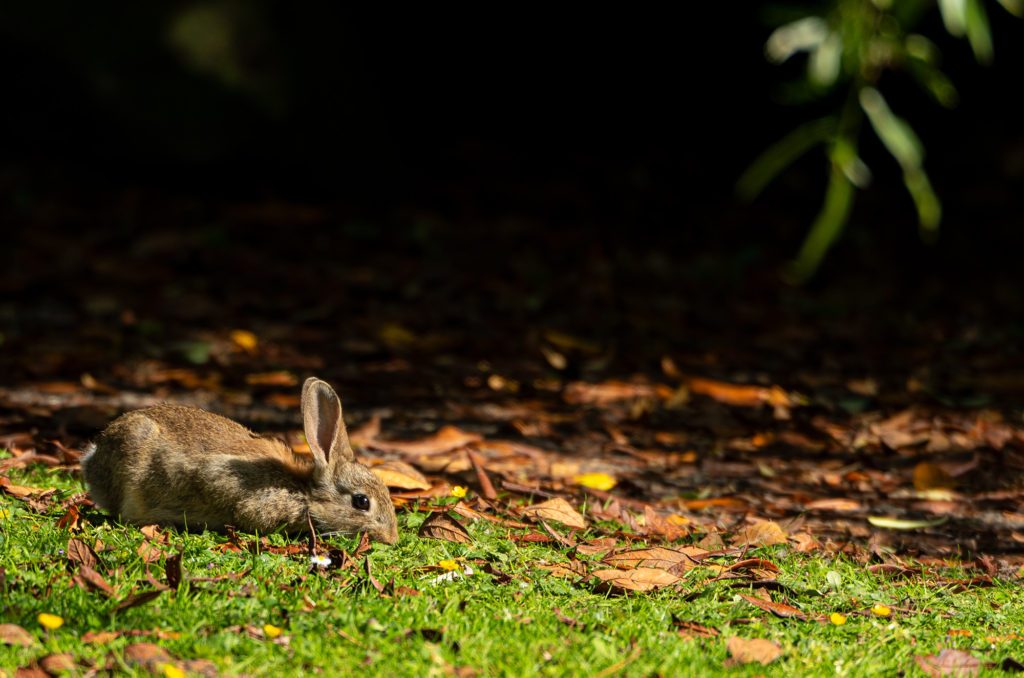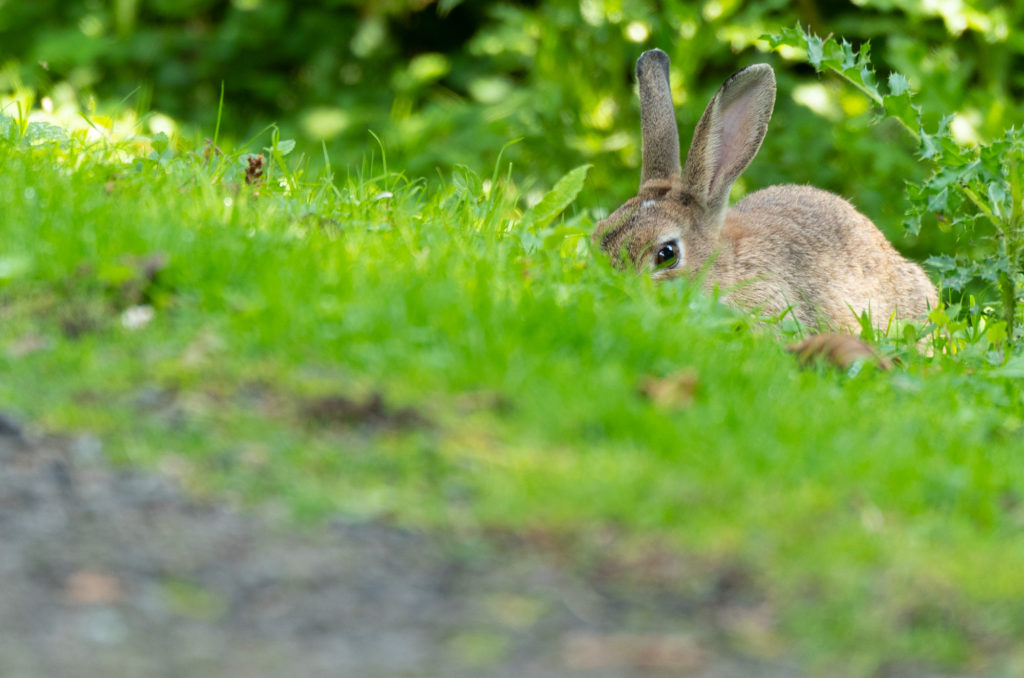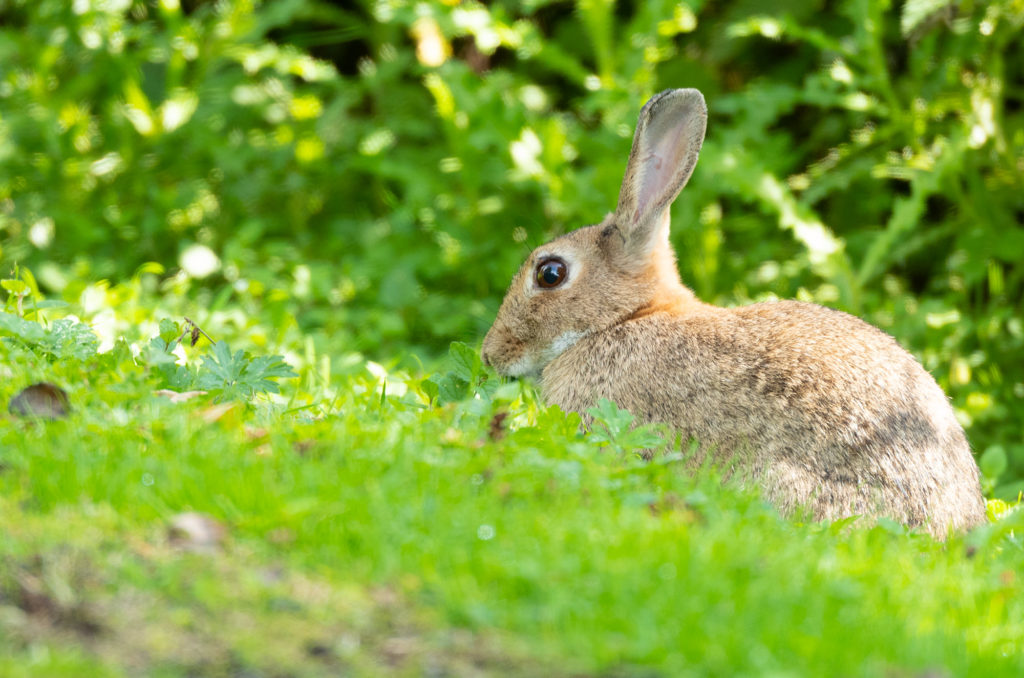Welcome to … Bunny Park [cue a dramatic score by John Williams while Sam Neil and Laura Dern look on in awe]…
Ok, ok, these images may not exactly conjure up the wonder of Jurassic Park, but they make me smile. I had wanted to photograph rabbits in the place we affectionately named “Bunny Park” for some time, but the opportunity had eluded me for various reasons. Every time we had strolled through this small park on the Clyde and spotted the rabbits that live there, I either hadn’t had my camera, or the light was non-existent, or the rabbits were spooked by other people. Back in July, I finally had my camera, the light was decent, there were hardly any people around, and the rabbits decided to make an appearance. Rabbits may not be the most exciting subject for many people, but I am delighted to have a location to get images like this.

I couldn’t get down as low as I wanted for the image above, as my knees were feeling pretty sore, but still managed to capture this young rabbit bathed in sunlight in front of the shadow of the trees and bushes beyond. A few seconds after I captured this, one of the adult rabbits came to usher this youngster away from some approaching cyclists to safety.
Bunny Park 2
We returned to “Bunny Park” in August and had a lovely walk along the coast with views of a huge variety of wildlife. We spotted cormorants, black-headed gulls, herring gulls, goosanders, redshanks, eider ducks and even a grey seal popped its head up momentarily. But, as you can probably guess, I was still interested in getting some more images of the rabbits. Many had appeared by the end of our walk and I was able to capture some decent shots but, on closer inspection, it looked like some of these rabbits were showing mild signs of myxomatosis. This is a severe disease that spreads via wild rabbits, mosquitos and fleas. Sadly, myxomatosis is nearly always fatal, which is why you should get your domestic rabbits vaccinated.

Disappearing rabbits sadly not a magic trick
It turns out that I am not the only one noticing that rabbits aren’t as easy to spot as they used to be, as a piece on rabbits in the Guardian Country Diary last week demonstrates. The fall in wild rabbit numbers is partly due to Rabbit Viral Haemorrhagic disease, which is highly contagious and deadly and has spread through wild and domestic rabbits during recent years. This comes on top of the myxomatosis that I noticed in “my rabbits” – although that particular disease is easier to spot as it causes visible symptoms, whereas RHDV can remain hidden. The presence of these diseases in our wild rabbit population serves to highlight the importance of getting your domestic rabbits vaccinated.
While some people may be relieved that wild rabbit numbers have fallen, it is important to note that this has knock-on effects for other species. Buzzards and stoats are just two predators that can be affected by a reduction in rabbit numbers. In the 1950s – when myxomatosis first appeared – it would have been much easier for them to find alternative prey but, with so much of our wildlife in trouble, the lack of rabbits is cause for concern.

The history books say that the Romans brought rabbits with them on their travels in the 1st century, although it is unclear how and when the wild rabbit population became established in the UK. I guess this is a good example of how “life finds a way” and, hopefully, it will continue to do so where the rabbits are concerned. Cue the John Williams score!

